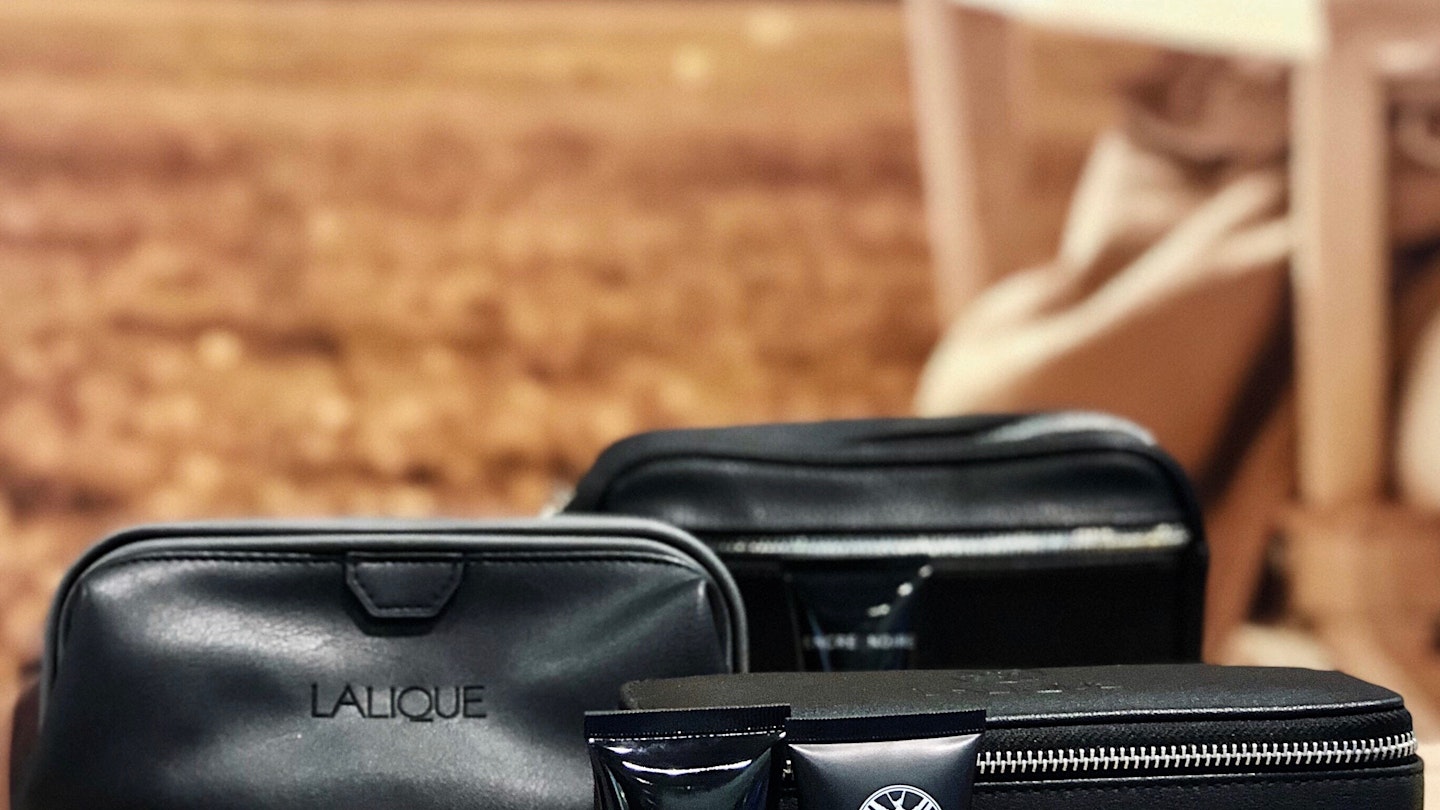Share
Aug 30, 2019 • 5 min read

Ever walked past those first and business class seats and had your eye caught by one of those snazzy little amenity kits — or, even better, been presented with one of these airline goodie bags in flight?

Amenity kits represent a lucrative opportunity for airlines, and it’s not just providing a toothbrush and those unusual plasticky airline socks for passengers. It encompasses everything from designer clutches to reusable shopping bags, including full-size bottles of eau de toilette and luxury scented candles… which, of course, are not for onboard use!
I had the opportunity to speak with Ronald Loh, a professional who has been creating amenity kits with one of the industry’s major players for over five years, to delve deeper into this fascinating aspect of air travel.
What is an Amenity Kit?
To start, I inquired about the definition of an amenity kit.
‘An amenity kit is a collection of personal care items provided to passengers on long-haul flights,’ Loh explains. ‘These kits are mostly given to First, Business, and Premium Economy passengers.’
‘Typically,’ he adds, ‘an amenity kit is packaged in a bag or pouch containing essential items such as a dental kit, skincare and cosmetic products, earplugs, socks, and an eye mask. Depending on the airline and class of travel, the kit may also include a vial of high-end fragrance and a broader selection of premium cosmetics.’
The Evolution of Amenity Kits
However, amenity kits are evolving beyond mere necessities into thoughtful gifts from airlines.

‘While amenity kits originated from the necessity to address immediate passenger needs, they have progressively transformed into a crucial part of the inflight experience through innovative products and high-end brand collaborations,’ Loh emphasizes.
This collaborative effort spans across various brands, including luggage manufacturers like Rimowa (Lufthansa, EVA Air) and Tumi (Delta) to luxury labels such as Salvatore Ferragamo (Singapore Airlines) and Finnair’s ongoing partnership with the famed Finnish design house Marimekko.
‘The process commences with a robust understanding of both the airlines’ and passengers’ requirements as every program is unique,’ Loh shares. ‘We engage in a cross-team approach to develop products that harmonize form, function, aesthetics, and brand alignment, thereby enriching the cabin and travel experience.’
Factors That Influence Amenity Kit Design
Moreover, beyond basic considerations like weight, size, and cost, the design methodology encompasses various aspects you may not initially recognize.
- Does the airline want to implement different amenity kits for flights departing to and returning from its primary hub?
- Are there varying provisions based on specific country markets?
- Will there be a scaled-back selection of amenities provided during daytime flights versus a more exhaustive range for overnight journeys?
- How can airlines cater to those competitive medium-haul flights where amenities are frequently overlooked?
The selection of brands is equally significant not only for airlines but also for the brands themselves, as nobody desires an association with airlines known for poor comfort and service standards. Conversely, collaborating with a recognizable brand can be advantageous.

‘Brand alignment has been crucial over the past few years,’ Loh reflects. ‘Passengers now expect well-curated brand collaborations that are thoughtfully designed to create a seamless travel experience, rather than random branded products just placed onboard.’
Notably, Finnair excels in this area with its Marimekko kits, while Japan Airlines’ Shiseido amenities offer a luxurious touch reflective of Japanese culture. Furthermore, Swiss includes items from local brands like Bally and La Prairie, while Air France features Clarins products.
The Shift Towards Eco-Friendliness
Passengers have become increasingly tech-savvy and vocal through social media platforms, demonstrating a willingness to explore modern millennial brands that align with eco-conscious lifestyles.
As global awareness regarding ecological impacts rises, especially since international flights often face restrictions on recycling waste for health and safety reasons, questions arise about the environmental sustainability of single-use plastic items.
‘Fortunately, the demand for sustainable solutions is driven by eco-aware travelers and regulatory pressures,’ Loh notes. ‘This trend is fostering a shift towards smart materials, including the replacement of traditional fabrics with innovative options such as Tyvek or vegan leather. We have also collaborated with select skincare brands that adhere to sustainable, zero-carbon manufacturing processes and use the finest organic and natural ingredients.’
However, it is evident that further actions are needed. The aviation industry has experienced a fair degree of greenwashing in the name of cost-cutting over the years, including practices such as packaging amenity kits in paper. Nonetheless, weight reduction is not a solution if the kits are not reused.
Passengers walking through business and first-class cabins often witness the vast quantity of kits left behind, partially used.
Some airlines, like Singapore Airlines in business class, have started to circulate a basket of amenity items for passengers to select from, with additional options offered in lavatories. This method is inherently more environmentally friendly, catering to varied passenger preferences—since not everyone may desire socks or lip balm—and it also proves to be more economical for airlines.
In this context, the challenge lies in addressing the ‘goodie bag giveaway’ approach. A branded, reusable bag available on demand to store clothes during flights, which can later serve as a shopping bag when returning home, represents an innovative solution. Alternatively, a lightweight packing cube could be a practical offering.
As aviation dynamics continue to evolve, understanding the trends and passenger expectations surrounding amenity kits will be vital for airlines to enhance overall passenger experience.





